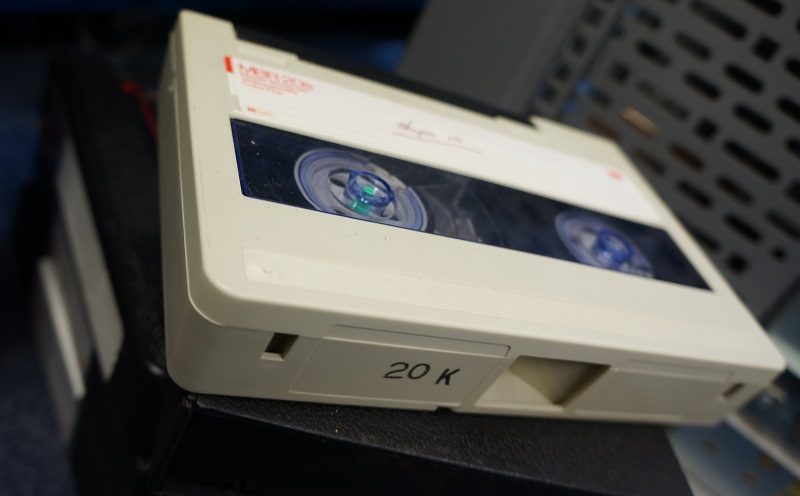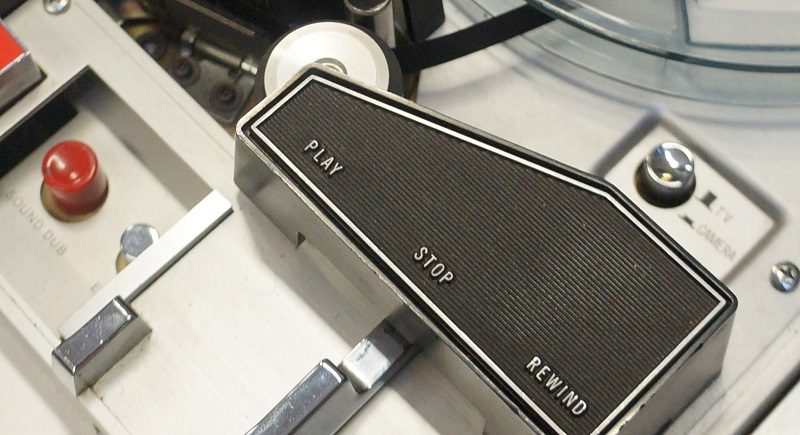Contemporary culture is often presented as drowning in mindless nostalgia, with everything that has ever been recorded circulating in a deluge of digital information.
Whole subcultures have emerged in this memory boom, as digital technologies enable people to come together via a shared passion for saving obscurities presumed to be lost forever. One such organisation is Kaleidoscope, whose aim is to keep the memory of ‘vintage’ British television alive. Their activities capture an urgent desire bubbling underneath the surface of culture to save everything, even if the quality of that everything is questionable.
Of course, as the saying goes, one person’s rubbish is another person’s treasure. As with most cultural heritage practices, the question of value is at the centre of people’s motivations, even if that value is expressed through a love for Pan’s People, Upstairs, Downstairs, Dick Emery and the Black and White Minstrel Show.
We were recently contacted by a customer hunting for lost TV episodes. His request: to lay hands on any old tapes that may unwittingly be laden with lost jewels of TV history. His enquiry is not so strange since a 70s Top of the Pops programme, a large proportion of which were deleted from the official BBC archive, trailed the end of ½ EIAJ video tape we recently migrated. And how many other video tapes stored in attics, sheds or barns potentially contain similar material? Or, as stated on the Kaleidoscope website:
‘Who’d have ever imagined that a modest, sometimes mould-infested collection of VHS tapes in a cramped back bedroom in Pill would lead to the current Kaleidoscope archive, which hosts the collections of many industry bodies as well as such legendary figures as Bob Monkhouse or Frankie Howard?’
Selection and appraisal in the archive

Mysterious tapes?
Living in an age of seemingly infinite information, it is easy to forget that any archival project involves keeping some things and throwing away others. Careful considerations about the value of an item needs to be made, both in relation to contemporary culture and the projected needs of subsequent generations.
These decisions are not easy and carry great responsibility. After all, how is it possible to know what society will want to remember in 10, 20 or even 30 years from now, let alone 200? The need to remember is not static either, and may change radically over time. What is kept now also strongly shapes future societies because our identities, lives and knowledge are woven from the memory resources we have access to. Who then would be an archivist?
When faced with a such a conundrum the impulse to save everything is fairly seductive, but this is simply not possible. Perhaps things were easier in the analogue era when physical storage constraints conditioned the arrangement of the archive. Things had to be thrown away because the clutter was overwhelming. With the digital archive, always storing more seems possible because data appears to take up less space. Yet as we have written about before on the blog, just because you can’t touch or even see digital information, doesn’t mean it is not there. Energy consumption is costly in a different way, and still needs to be accounted for when appraising how resource intensive digital archives are.
For those who want their media memories to remain intact, whole and accessible, learning about the clinical nature of archival decisions may raise concern. The line does however need to be drawn somewhere. In an interview in 2004 posted on the Digital Curation Centre’s website, Richard Wright, who worked in the BBC’s Information and Archives section, explained the long term preservation strategy for the institution at the time.
‘For the BBC, national programmes that have entered the main archive and been fully catalogued have not, in general, been deleted. The deletions within the retention policy mainly apply to “contribution material” i.e. components (rushes) of a final programme, or untransmitted material. Hence, “long-term” for “national programmes that have entered the main archive and been fully catalogued” means in perpetuity. We have already kept some material for more than 75 years, including multiple format migrations.’
Value – whose responsibility?
For all those episodes, missing believed wiped, the treasure hunters who track them down tread a fine line between a personal obsession and offering an invaluable service to society. You decide.
What is inspiring about amateur preservationists is that they take the question of archival value into their own hands. In the 21st century, appraising and selecting the value of cultural artifacts is therefore no longer the exclusive domain of the archivist, even if expertise about how to manage, describe and preserve collections certainly is.
Does the popularity of such activities change the constitution of archives? Are they now more egalitarian spaces that different kinds of people contribute to? It certainly suggests that now, more than ever, archives always need to be thought of in plural terms, as do the different elaborations of value they represent.



